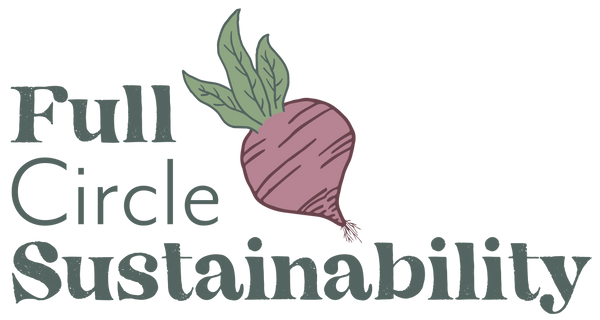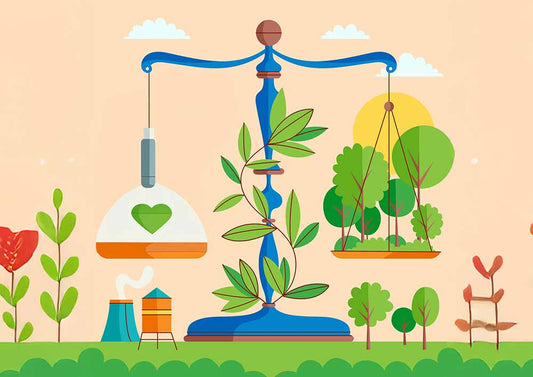
Make Composting Work for You
There’s lots of science behind composting, but if you get intimidated when people talk about the proper ratio of greens and browns, the message of last week’s Ecofriends presentation was an encouraging one: Composting really isn’t a precise science. Composting is just about helping the natural decomposition process. Unless you bury it inside a landfill, organic matter will naturally decompose. The questions are just how quickly you want that to happen and how much finished compost you want to produce. Those factors—along with your space and time constraints, interests, and abilities—can determine what type of composting it makes sense to pursue.
For example, if you want things to break down very quickly, a hot compost pile or vermicomposting system are your best bets. If you’re fine waiting a year or more, a hands-off cold pile will work well too!
This was reassuring advice for those of us who can’t follow a recipe or pay close attention to the details. There are best practices, but (to continue the cooking metaphor) as long as you’re happy with the results and aren’t burning down the house, it doesn’t really matter what pot you use, how much salt you add, or whether you sauté the onions first or just throw everything in.*
That being said, a recipe can be a good starting place—and a user’s manual can help you troubleshoot problems that arise. There are also a few concrete do’s and don’ts to be aware of if you want to use your finished compost on a garden, especially one with food you eat.
This blog post compiles some tips and information from the presentation by Master Gardener Kevin Siek so that you can get started composting the way it works best for you.
Why Compost?
First, we should just say: Composting is really important, whether you do it at home or utilize other services like the forestry dump** and our compost bin swap program. Putting organic matter back into the soil improves the soil in a variety of ways. It keeps carbon in the Earth (where it belongs) instead of in the air (where it contributes to climate change). If you put that organic matter in the landfill, it will release methane as it decomposes. That’s bad. Composting produces very little methane.
What Goes Into Compost?
-Carbon (“browns”)
- Examples: Straw, leaves, twigs, shredded paper or cardboard, sawdust, woodchips, lawn thatch, leftover baked goods or pasta, human and pet hair, yard waste
-Nitrogen (“greens”)
- Examples: Food scraps (raw or cooked), coffee grounds, tea leaves/bags, green grass clippings, manure
-Air
- You get this from turning the compost pile. It’s what makes the decomposition process happen more quickly and without releasing nearly as much methane as would occur in a landfill.
-Water
- You want the material to decompose, not just dry out. But you don’t want so much moisture that your compost pile stinks!
-Soil (optional)
- Adding soil can introduce organisms that aid decomposition, but it’s not essential.
What Doesn’t Go Into Compost?
-Pet feces (from carnivorous animals like cats and dogs; manure from cows, chickens, etc., is good)
-Cat litter
-Oils (Small amounts in cooked food is okay, but don’t try to compost more than that. Oils create barriers around the waste, preventing water and air from flowing freely and slowing down the composting process.)
-Black walnut shells, branches, or leaves (contain a chemical that suppresses plant growth)
-Diseased plants and weeds that have gone to seed
-Plants treated with pesticides
-Synthetic materials (e.g., produce stickers, anything plastic, glossy paper or paper coffee cups, which usually have a plastic coating)
-Coal or coal ash (can contain harmful chemicals)
-(Controversial) Meat, dairy, eggs, and bones (These are organic, so they will absolutely break down. But they can attract pests and can even become infected with bacteria such as E. coli, listeria, or salmonella as they decompose. If you use the compost in your garden, there’s a risk of that bacteria being transferred into your plants. For that reason, many experts advise against composting these products in a home composting system.)
Quantities, Times, and Temps (for those who like the numbers)
-An efficient compost pile needs more browns than greens (about a 2:1 ratio of browns to greens, by volume)
-An efficient compost pile should have about 40-60% moisture (about as wet as a wrung-out sponge).
-An efficient hot compost pile should be at least 3 cubic feet (otherwise it won’t get hot enough).
-A hot compost pile should reach a temperature of 130-140° F before you turn it.
Methods (deciding how you want to get it done)
-Cold Pile
(Dump it in a heap and leave it!)
- Pros: Super easy; can continually add more material
- Cons: Doesn’t work very fast (1 year+); doesn’t destroy weed seeds and pathogens
-Hot Pile
(Layer browns and greens in a bin; turn the pile regularly)
- Pros: Works fast (weeks/months); destroys weed seeds and pathogens
- Cons: Takes some effort and attention; can’t continually add more material
-Vermicomposting
(Harness the voracious appetites of red wiggler worms to compost food in a large tub indoors)
- Pros: Fairly low effort; works very quickly (typically faster than a hot pile); good for small spaces and small amounts of waste; doesn’t need as much brown material (though you will need some)
- Cons: Material needs to fit in a tub; can’t continually add more material; doesn’t destroy weed seeds and pathogens
Troubleshooting Guide
|
What’s Wrong |
What To Do About It |
|
Pile is dry and not hot enough |
Add water and nitrogen (greens) |
|
Pile is damp enough but not hot enough |
Add nitrogen (greens) |
|
Pile is only hot and damp in the middle |
Add material to make the pile larger |
|
Pile is attracting animals |
Turn the pile or add materials to cover food scraps |
|
Pile smells bad |
Add carbon (browns), turn pile, and make sure it doesn’t get too wet |
Thanks so much to Kevin for sharing this information as well as the resources below! We hope they will help you find the type of composting that works with your lifestyle and feel empowered to try it out!
-Justine
Resources
Home & Backyard Composting, NC State Extension
Making and Using Compost, MU Extension
Making Compost: A Beginner’s Guide, K-State Extension
Composting, Cornell Cooperative Extension of Warren County
Sustainable Landscapes: Creating a Hügelkultur for Gardening with Stormwater Management Benefits, OSU Extension
Composting 101, Natural Resources Defense Council
Vermicomposting, NC State Extension
Footnotes
*We know you should ALWAYS sauté the onions first.
**There are two yard waste composting/processing facilities in Topeka: Garick's and Custom Tree Care. We've had positive experiences with both.



